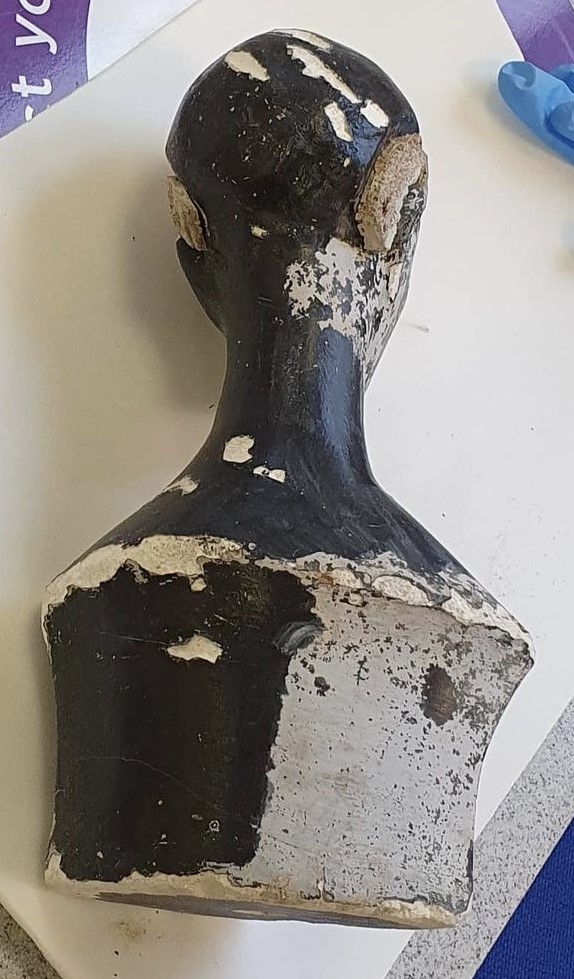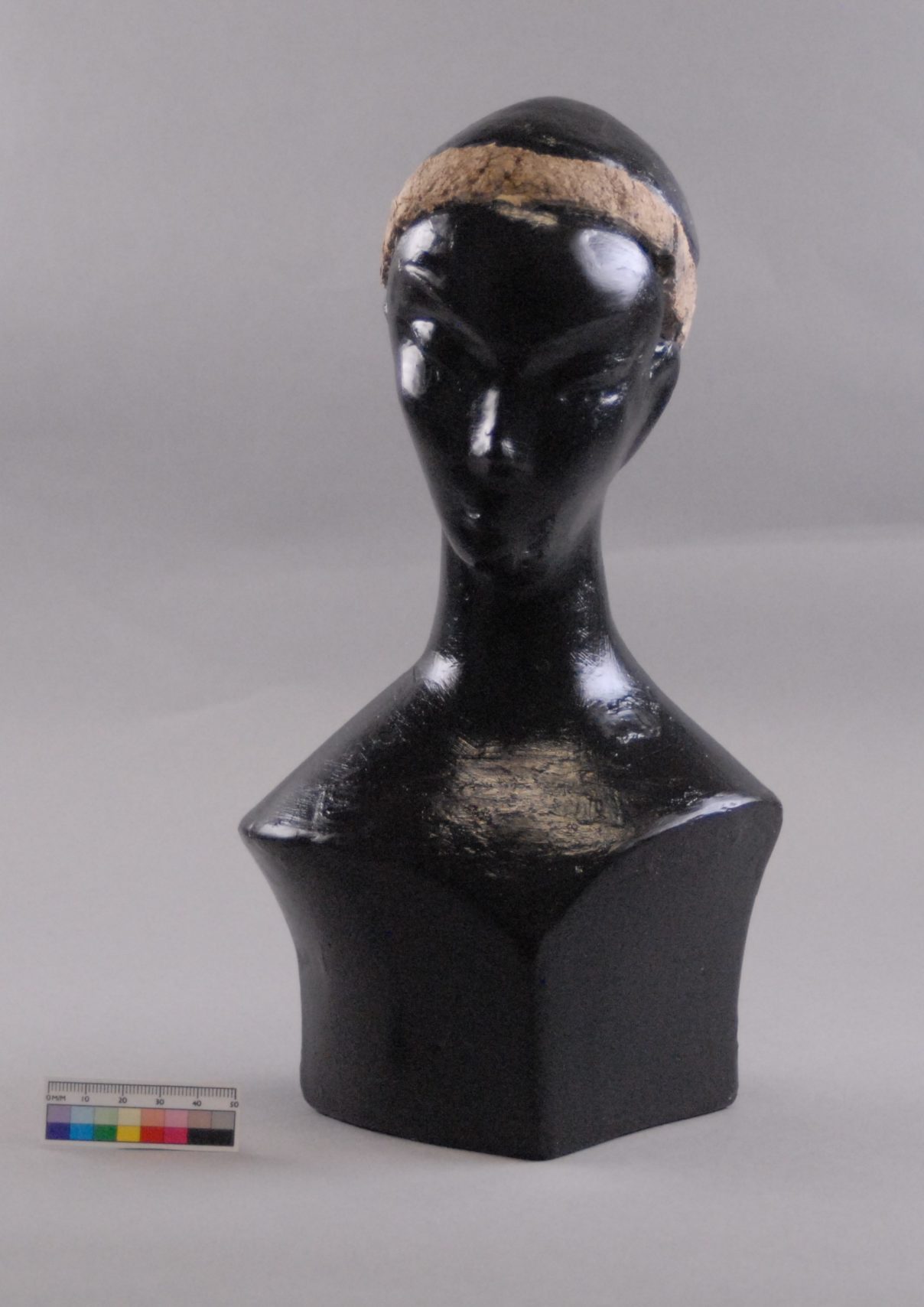Painted Plaster Mannequin
Object

The object is a painted plaster mannequin bust which forms part of the collection at Beamish Museum in the North of England. The object came to the museum as part of the collection of the Incorporated Guild of Wigmakers, Perfumers, and Hairdressers.
It likely dates from the 1950s and was possibly used in a hairdressers to display hairstyles using wigs. It was common for hairdressers to display the different hairstyles they could offer, the majority of which would be popular at the time.
This mannequin is made from plaster, which has been painted several times over the years, and appears to have a cork ‘headband’ which is likely how the wig would have been held in place.
Condition
- There are several areas of surface material loss which reveal the original plaster material
- There is visible surface dirt covering the object
- The object appears to have been overpainted at some point which has shown signs of loss, revealing the original black paint underneath
- The original paint has some small areas of flaking.
Conservation

The object was initially surface cleaned using a soft brush and museum vacuum in order to remove loose dirt. Following this, a decision regarding the overpainting needed to be made. Although the overpainting was part of the objects history, it was flaking away in a number of places and the original black paint appeared to be in good condition. As such, the decision was made to remove the overpaint; this was achieved using an appropriate solvent which removed the overpaint, but did not damage the original black paint underneath.
Following this, it was found that some small areas of the black paint were flaking, so these areas were consolidated using a suitable adhesive solution, applied carefully using a soft brush. This same adhesive solution was also used to treat the exposed areas of plaster, which were powdery, in order to minimise loss.

As Beamish Museum were considering using this object in their new 1950s terrace, the areas of surface material loss needed to be filled in order to have the object look as it would have when in use. The areas of surface material loss were filled using using pigmented Flugger as this way the fills would be able to be differentiated from the original material in the future. The fills were slightly raised above the original surface so they could then be sanded down. These areas of fill were then colour matched in order to make them blend with the original surface.
